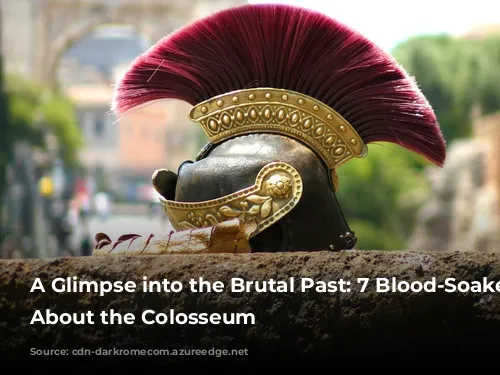The Colosseum, Rome’s most recognizable landmark, stands as a testament to the ancient Roman world. This colossal amphitheater, drawing millions of visitors each year, offers a captivating journey through time. Whether you explore it under the blazing sun or witness its grandeur under a starlit sky, the Colosseum whispers tales of glory and bloodshed.

More Than Just Gladiatorial Combat
The gladiator games were far from simply two fighters clashing with no rules. Similar to modern boxing and UFC, these contests were meticulously orchestrated, pitting gladiators against each other based on their size, fighting experience, and combat styles.
These warriors, drawn from the ranks of slaves, criminals, and prisoners of war, took immense pride in their craft. Hidden beneath the arena floor in a network of tunnels, they waited their turn to make a dramatic entrance, thrilling the eager crowds.
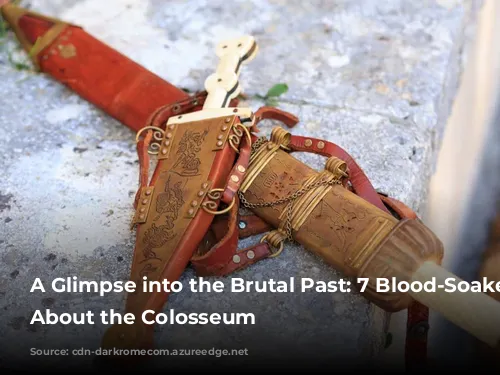
A Spectacle of Thrills and Death
The Colosseum wasn’t just a venue for gladiatorial combat; it was a cultural epicenter for the ancient Romans. Imagine a world without modern sports, and you’ll understand the intense fervor surrounding the games.
The Colosseum could accommodate over 50,000 spectators, who filled the stands to witness these thrilling battles. While entry was free, seating was strictly segregated by social class, with wealthier citizens enjoying the best views. These events weren’t just about fighting; they were a spectacle for the senses, complete with free food and entertainment.
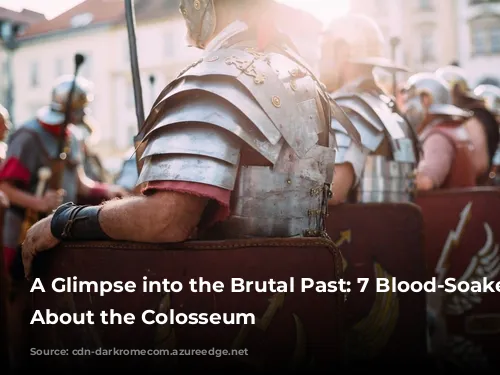
The Grueling Training
These high-stakes battles, where life and death hung in the balance, demanded intense training. Newly recruited gladiators underwent rigorous physical assessments and medical evaluations before embarking on their training regime.
Seasoned veterans, survivors of countless battles, guided these aspiring warriors. Training started with wooden swords, emphasizing safe practice and the mastery of diverse fighting styles, weapons, and techniques. Each gladiator, whether heavily armed or lightly armored, received tailored instruction.
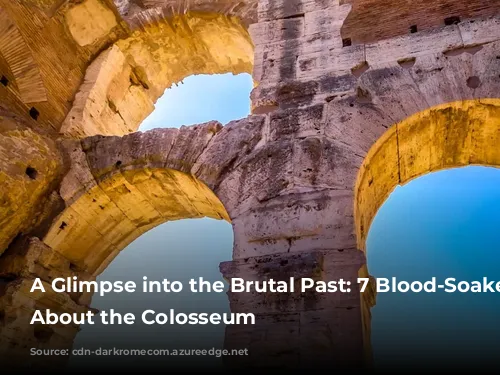
A Deadly Arsenal
Gladiators were masters of various weapons, including swords, tridents, lances, nets, and even bows and arrows. They were renowned for their physical prowess and skill with weaponry.
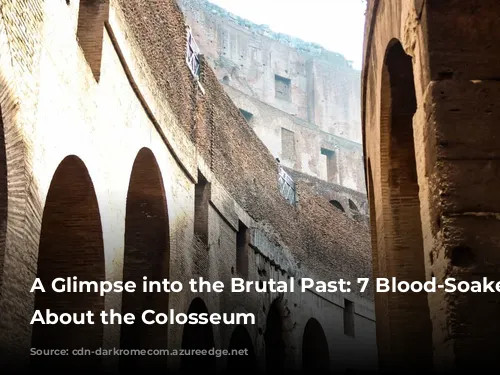
A Colosseum of Death
The Colosseum’s brutal legacy is undeniable. For nearly 400 years, hundreds of thousands of people met their end within its walls. Estimates suggest an average of 1,000 deaths annually, a grim testament to the savagery of the games. The victims, primarily those from the lower classes, often faced a brutal fate.
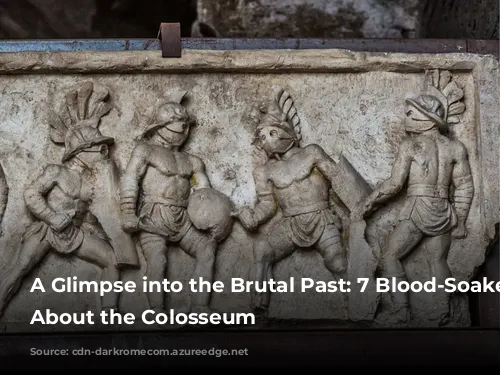
Dying With Honor
The gladiatorial training wasn’t just about fighting prowess. Dying with honor was paramount. Gladiators learned to meet their end gracefully, with unwavering bravery. This was the expected spectacle, the ultimate tribute to their courage.
More Than Just Human Bloodshed
The Colosseum wasn’t solely a stage for gladiatorial combat. Animals, too, were part of this violent entertainment. The practice of ‘venatio’ (hunting) involved the brutal slaughter of wild animals.
These spectacles, held before the gladiatorial battles, were a testament to the Roman Empire’s vast resources. Exotic creatures, often transported from far-flung corners of the empire, provided a glimpse into a world beyond the reach of ordinary citizens.
A Menagerie of Death
The animals used in these games were considered exotic, including lions, tigers, bears, leopards, crocodiles, elephants, and even hippopotamuses. Wolves, however, were excluded due to their religious significance.
When Animals Conquered
While the animals were often slaughtered, there were instances where humans faced a deadly twist of fate. The strength and ferocity of these creatures sometimes proved overwhelming, resulting in the death of their human opponents.
In other cases, animals were used as a form of execution for convicted criminals, known as ‘ad bestias.’ These condemned souls were thrown into the arena to face the wrath of wild beasts, a particularly brutal and public form of execution.
A Journey Through Time
The Colosseum, a relic of a bygone era, stands as a reminder of the brutal and fascinating history of the Roman Empire. A tour of this iconic landmark offers an unforgettable glimpse into the world of the gladiators, a world of courage, blood, and spectacle.
Stepping into the Colosseum is stepping back in time, following in the footsteps of these brave men. It is a captivating experience, leaving a lasting impression on visitors of all ages.
